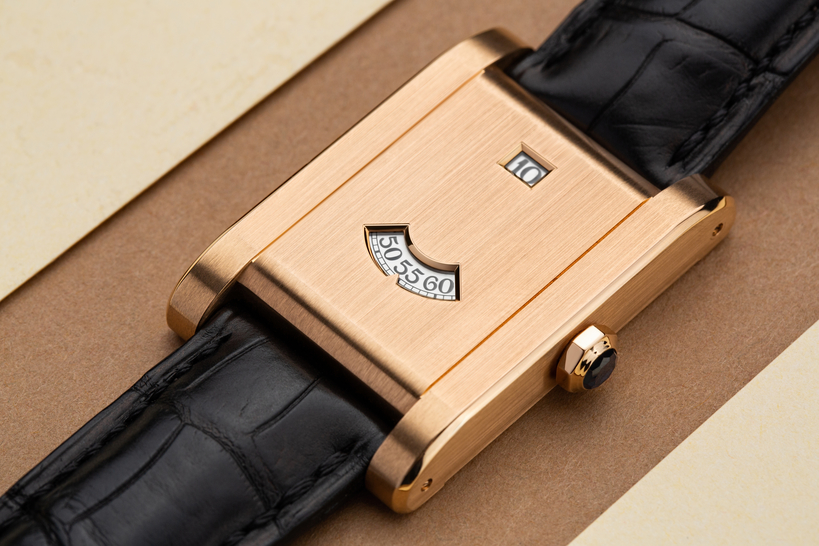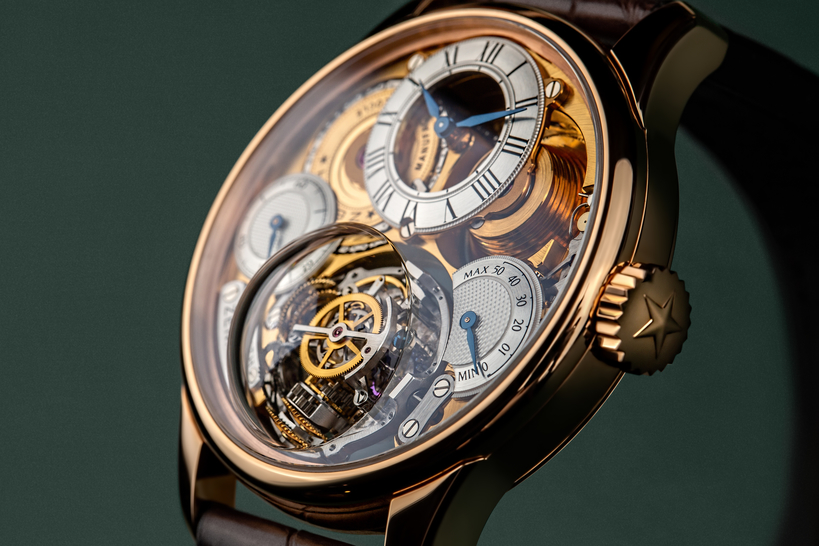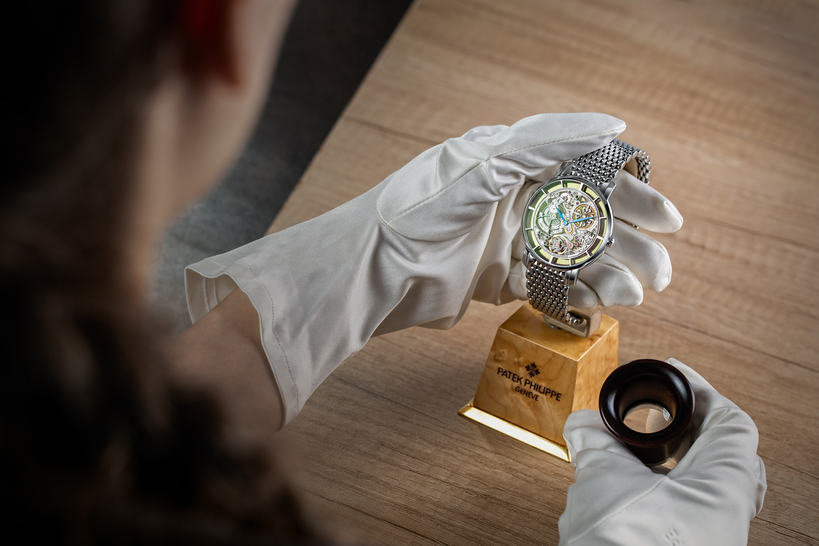The unique event which was due to take place in London's Design Museum from December 10 to 16 has been predictably postponed until 2022. But we're going to tell you about it anyway!
The exhibition encompasses over 150 unique timepieces by Patek Philippe and Rolex collected over the past forty years. Well, the collection doesn't really exist as such. The OAK Collection is just a dream — the dream of bringing together the rarest of OAK Collection watches if only for a short time, borrowed from the finest private collections and the Patek Philippe Museam.
There's a good reason why the Patek Philippe Museum is regarded as the "Temple to Watchmaking": it houses more Breguet pieces than Maison Breguet itself. It's a similar story with Vacheron Constantin. The OAK Collection is the best chance to study the historical milestones of both brands at a glance.
For example, never before has it been possible to see such an extensive collection of iconic Calatrava watches. The Calatrava cross was registered by the company Patek Philippe & Cie as its trademark on April 27, 1887. The symbol was paraded on the banners carried by the first Spanish Catholic order of knights founded in Castile in 1157.
The significance the Calatrava collection holds for the Genevan watchmaker can be understood by looking at the timeline. The family of watches can be traced back to 1932, one year after Patek Philippe declared bankruptcy and put the production up for sale. The brand's rebirth and return to its former glory began with the arrival of new owners, the brothers Charles and Jean Stern.
They had stood at the helm of the company Fabrique de Cadrans Stern Frères, which had supplied Patek Philippe's dials. The brothers understood that the future was in wristwatches, and began developing a model which would meet several fundamental goals at once. Firstly, the company needed to come up with a bestseller which could dig the brand out of the debt pit it had fallen into.
The OAK Collection is the best chance to study the historical milestones of both brands at a glance.
Secondly, it needed to break out of the elite yet extremely narrow circle of well-off collectors with a passion for complicated watches. And last but not least, the new model needed to be able to prove that despite the company's reorientation towards wristwatches, the grand maison still delivers the highest level of quality, design and aesthetics, and is capable of setting trends.
The resulting Calatrava Reference 96 with its caliber 12 movement by Jaeger-LeCoultre and uncluttered dial really was the company's lifeboat. From then on, hundreds of thousands of Calatrava were released, including many bespoke pieces, custom-made for individual clients.
One of the earliest of these models was the Ref.96P in a platinum case with an opaline dial and diamond hour markers, which helps set the tone for the exhibition. Not many people may know that another model inextricably associated with the watchmaker Patek Philippe called Ref. 2499 was the first-ever self-winding perpetual calendar wristwatch when it was unveiled in 1925.
The signature pairing of a perpetual calendar with a chronograph has been one of Patek Philippe's winning combinations ever since. The OAK Collection displays the anniversary version of this watch: the Ref. 2499J in a yellow-gold case with the first champagne-colored dial. It features apertures for the weekday and month (below the 12 o'clock mark), a 30-minute chronograph counter at 3 o'clock and small seconds at 9 o'clock..
Moving on, you can see how Ref. 2499 was replaced with Ref. 1518. It debuted in Basel in 1941 as the very first perpetual chronograph model to be made in a series by any watchmaker and most sought-after by collectors. Hardly any models were released in rose gold before 1952, when the 1518 was replaced by the Ref. 2499 model. You could count them all on one hand. One of them is included in the exhibition: it's the Ref. 1518R released in 1948 which sports a pink dial. A very rare piece indeed!
The perpetual calendar and chronograph watch Ref. 2499 is a great example of how the design of complicated watches evolved from 1951 to 1985. The OAK Collection displays an exhibit from 1952 (Ref. 2499J) in a yellow-gold case with a champagne-colored “doré” dial encircled by a tachymeter scale — the only existing model with this combination.
You can gain a great insight by studying the second-last and current generation of 3970 perpetual chronographs which have been manufactured since 1986. This is the model frequently used as the starting point for private orders as well as for the latest watches in the Grand Complications category (the Patek Philippe Ref. 5270 released since 2011).
The exhibit features a model from 2013 with the manually wound CH 29-535 PS manufacture movement and trademark PP Patek Philippe Seal as a guarantee of quality. When it comes to chronographs, the exhibits on display are no less extensive.
Visitors will even get the chance to see such rare pieces as the collection's earliest example, from which all the rest are descendants — the Ref. 130J single-pusher chronograph from 1935. It's the only piece which has survived to this day. Visitors also have the chance to learn how another iconic model has evolved since the day the World Time display was invented by the remarkable watchmaker Louis Cottier, with its rotating 24-hour ring of time zones.
As a bonus, the OAK Collection will display a collection of the most complicated pocket watches which remain the most expensive to this day and once belonged to the American banker Henry Graves Jr. He was Patek Philippe's biggest collector, and most of his timepieces were specially commissioned.
Ref. 130J single-pusher chronograph from 1935 is the only piece which has survived to this day.
He would hold lengthy discussions with the company's representatives to dictate the precise complications and functions his pieces needed to have. The banker and railroad magnate went down in the maison's history as one of its most demanding and hard-to-please clients. You can see why when you take a look at the platinum tourbillon chronometer manufactured in 1932.
It was subjected to precision testing at the Geneva Observatory for almost an entire year before it was shipped over to the other side of the Atlantic. Thanks to all the ordeal, the tourbillon held onto its title as the most accurate watch in chronometer category C right up to the year 1944. Between 1922 and 1951, Henry Graves Jr. ordered a total of 39 timepieces from Patek Philippe.
Based on the documentary evidence we have today, only thirty of them have survived intact, thirteen of which have been purchased by the Patek Philippe Museum. The exhibition is sure to provide a comprehensive picture of how the most sought-after watches in modern history were conceived: the Rolex Oyster Perpetual Datejust, Day-Date and the Daytona chronograph.
Seeing rare Rolex models with your own eyes is an extremely lucky opportunity to have in and of itself. The exhibition is divided into a total of eleven sections. Rumor has it some of the unique pieces were given to the organizers for promotional reasons ahead of the auctions which have just taken place.
This is a fair assumption to make, given that pieces created by François-Paul Journe and Kari Voutilainen were added to the exhibition just before the opening was due to get underway. How could that not be a response to the surge in interest towards these independent brands and their staggering records?



